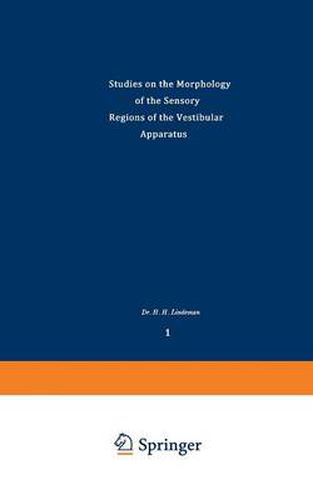Readings Newsletter
Become a Readings Member to make your shopping experience even easier.
Sign in or sign up for free!
You’re not far away from qualifying for FREE standard shipping within Australia
You’ve qualified for FREE standard shipping within Australia
The cart is loading…






This title is printed to order. This book may have been self-published. If so, we cannot guarantee the quality of the content. In the main most books will have gone through the editing process however some may not. We therefore suggest that you be aware of this before ordering this book. If in doubt check either the author or publisher’s details as we are unable to accept any returns unless they are faulty. Please contact us if you have any questions.
The membranous labyrinth lies (‘neloHed in the very hard petroua part, of the temporal bone and, as the name implies. it,s structure is extremely compl('x. This may explain why our knowledge of this organ and the vestibular sensory regions within it, is not yet satisfactory. In recent years the rapid development of space research has provided a power- ful stimulus to our interest in the vestibular apparatus. This has found expression in annual symposia, in which the role of thc vestibular organs in the exploration of space is discussed. However, little is known as yet about the inflU
$9.00 standard shipping within Australia
FREE standard shipping within Australia for orders over $100.00
Express & International shipping calculated at checkout
This title is printed to order. This book may have been self-published. If so, we cannot guarantee the quality of the content. In the main most books will have gone through the editing process however some may not. We therefore suggest that you be aware of this before ordering this book. If in doubt check either the author or publisher’s details as we are unable to accept any returns unless they are faulty. Please contact us if you have any questions.
The membranous labyrinth lies (‘neloHed in the very hard petroua part, of the temporal bone and, as the name implies. it,s structure is extremely compl('x. This may explain why our knowledge of this organ and the vestibular sensory regions within it, is not yet satisfactory. In recent years the rapid development of space research has provided a power- ful stimulus to our interest in the vestibular apparatus. This has found expression in annual symposia, in which the role of thc vestibular organs in the exploration of space is discussed. However, little is known as yet about the inflU